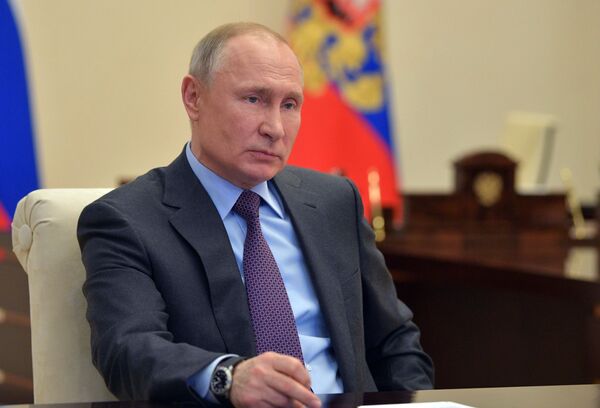The tentative Russian and Saudi-led OPEC+ deal on making cuts in oil output to end the global glut and pick prices up off the floor may have allowed the US shale oil industry to “dodge a bullet” and live to fight another day, energy market analysts have told The New York Times.
On Thursday, two dozen major oil producing nations announced a preliminary agreement which would require cross-the-board cuts of about 23 percent of their output for a total of 10 million barrels per day (bpd) over the next two months, followed by eased cuts of 8 million bpd for the remainder of the year and through 2022.
Mexico, whose president has made increasing oil production a key plank of his economic platform, has been the only country to voice opposition to the cuts, indicating that it would agree to turn off the taps on only 100,000 bpd from the 400,000 requested by OPEC+. Mexico’s intransigence has prompted President Trump to intervene, promising to cut 250,000 bpd in US output on Mexico’s behalf. OPEC+, whose members have warned that the deal may be scrapped if Mexico doesn’t join, have yet to report back on whether they would agree to the joint US-Mexican approach.
Survival From the Jaws of Doom
If approved, the OPEC+ deal could give US shale producers some breathing space over the short term, and maybe even save them from disaster in the long term, observers say.
“Hopefully, the American oil industry has avoided a worst-case scenario,” Amy Myers Jaffe, energy expert from the Council on Foreign Relations, a powerful Washington-based think tank, told NYT. “There still will be bankruptcies, but for the time being, the fears that there would be a wholesale destruction of the industry can now be put aside, because the worst of the price war has passed,” she added.
Trent Latshaw, president of Oklahoma and Texas- based oil services company Latshaw Drilling, agreed, telling the paper that while there would some companies that won’t survive the downturn, “the industry in general will survive and come out of this stronger. We will have to make hard decisions, innovate, and we’ll become smarter because of this,” he said.

Lobbying Moscow and Riyadh
The Trump administration has fervently supported efforts by fellow top oil producers Russia and Saudi Arabia to agree on cuts in oil production amid the glut, well aware of the fact that oil and gas employs over 10 million Americans and accounts for about 7 percent of the country’s GDP.
The president’s strategy has reportedly included threatening foreign oil producers with tariffs, and even a backup, tougher option of direct sanctions against Russia to try to force Moscow and Riyadh to come to the negotiating table in the OPEC+ format. Last week, US lawmakers from major oil-producing states reportedly similarly warned Saudi Arabia that America may be forced to rethink its friendly relations with the kingdom over its decision to start a price war with Moscow.
The US has itself not committed to join the OPEC+ cuts, instead making assurances that shale producers would reduce output through market forces over time. According to industry figures, the US’s drop in output could see exports shrinking from over 3 million bpd in 2019 to almost zilch in the coming months, removing a key concern for both Russia and the Saudis amid fears of a US takeover of their traditional markets.

Goldielocks Approach to Pricing
But it’s the Russian and Saudi move to restart talks, not US pressure, that’s ultimately responsible for reopening talks, the NYT suggests, citing Saudi Arabia’s budget deficits, and Russia’s limited oil processing and storage capacity, particularly as China too is quickly filling up its reserves with bargain-priced Russian crude. “With thousands of Soviet-era oil and gas wells in western Siberia, Russia would be faced with the prospect of shutting down and later turning on wells, an expensive proposition, and in the process might permanently limit the amount of oil recoverable in the future,” the paper observes.
As for Riyadh, that country’s budget shortfalls, requiring them to eat into their reserves and issue more debt, could be dangerous politically, with Norwegian consulting firm Rystad Energy estimated that at prices in the $34 a barrel range, the kingdom could be projected to collect just half of its 2019 budget revenues this year.
Earlier this month, Russian President Vladimir Putin signalled that unlike some other players on the oil market, Moscow had no need to rid itself of healthy competition from US shale. According to Putin, Russia has advocated and will continue to advocate “for the long-term stability of the oil market, taking into account the positions of both producers and consumers,” and preferring that prices be neither too high nor too low. The president said Russia would be comfortable with prices in the $42 a barrel range, and stressed that the country would be prepared to work with other producers, including Saudi Arabia and the United States, to make it so.




